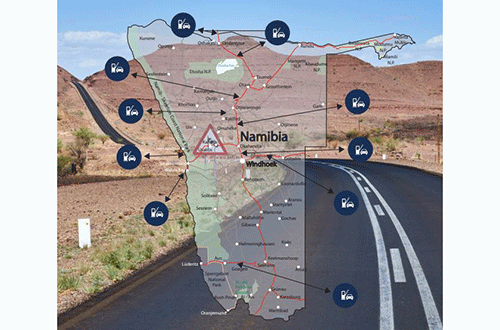Amid emerging challenges, the Road Fund Administration’s revenue has grown by 11% to N$2.4 billion due to operational effectiveness while its assets have also grown from N$1.8 billion to N$2 billion over the financial year ended 31 March 2022.
This was stated by the RFA’s CEO Ali Ipinge in the just-released 2022 integrated annual report.
“Our solvency and liquidity positions remained stable, compared to previous financial years. These have been complemented by an increase in our reserve fund from N$152 million recorded in 2021 to N$227 million in this financial year. Of the collected revenue of N$2.42 billion, we subsequently invested N$2.2 billion in the management and maintenance of our roads,” he stated.
The CEO added that the RFA deployed funding of approximately N$96 million to 57 local authorities and 14 regional councils, while N$24 million has been pushed to traffic law-enforcement (TLE).
The RFA was established to manage the road fund and the road user charging system with the purpose to secure and allocate sufficient funding to realise a safe and efficient road sector in Namibia.
Ipinge said there is no denying that there is rampant innovation in the automobile sector, which has witnessed the birth of fuel-efficient vehicles and hybrid electric vehicles, among other innovations, which are positive in view of reducing the global carbon footprint.
This thus leads to reduced fuel consumption and by extension fuel levies, which constitute the greatest portion of RFA revenue.
“As a result, we have been exploring alternative revenue streams to sustain the roads sector. One of the alternatives is tolling, and we have conducted a feasibility study that has provided invaluable insights into the possibility of tolling. We, however, need to have stakeholders’ consultations, and these have been approved by Cabinet,” Ipinge continued.
Board chairperson Emma Haiyambo said the optimism that the domestic economy will experience a much-improved growth performance, driven by increased mining activities and base effect recoveries in primary and tertiary industries, by extension bodes well for the RFA as these sectors are huge consumers of fuel, and will thus bolster the recovery in national fuel demand.
“We are, however, cognisant of the fact that as the road network ages, the maintenance needs will only increase. For this reason, there is an urgent need to increase revenues substantially. Various revenue sources are under consideration, and in accordance with our strategic plan, the shift towards distance-based road user charges is inevitable whilst optimising other road user charges,” she noted.
Tolling
The report stated that fuel demand will eventually phase out, thus making the current funding model obsolete. The current road user charging system does not generate sufficient revenue to fund the objectives of the RFA Act of a safe and efficient road sector, resulting in a N$3.6 billion funding gap against the highway development and management target from April 2020 to March 2025, which equates to 30.3% of the allocated budget.
“Seventy-three road sections were identified to include in the feasibility analysis, which cover 18.2% of the national road network, and account for 81% of the annual vehicle kilometres travelled. These sections were tested for financial feasibly, using the discounted cash flow model and based on the existing and future traffic volumes and the future revenues against the cost to upgrade and maintain these sections,” reads the report.
It added that essentially, the average toll would range from N$19.26 (rounded off to N$20) for passenger vehicles and N$83.08 (rounded off to N$83) for trucks across all sections. The actual toll fee paid will be determined primarily by the traffic volumes, length of the road and cost of capital.
In addition, the RFA foresees that tolling can increase gross domestic production (GDP) growth by 0.4% annually through construction activity, new jobs, consumption and second-round economic impact, which amounts to N$600 million annually.
“Overall tolling would add N$1.7 billion to the Namibian economy, thus resulting in a social profit of roughly N$1 billion once the toll revenues have been deducted. With extensive stakeholders’ consultations, the RFA can assure the public that distance-based road user charges are the way of the future,” it added.


